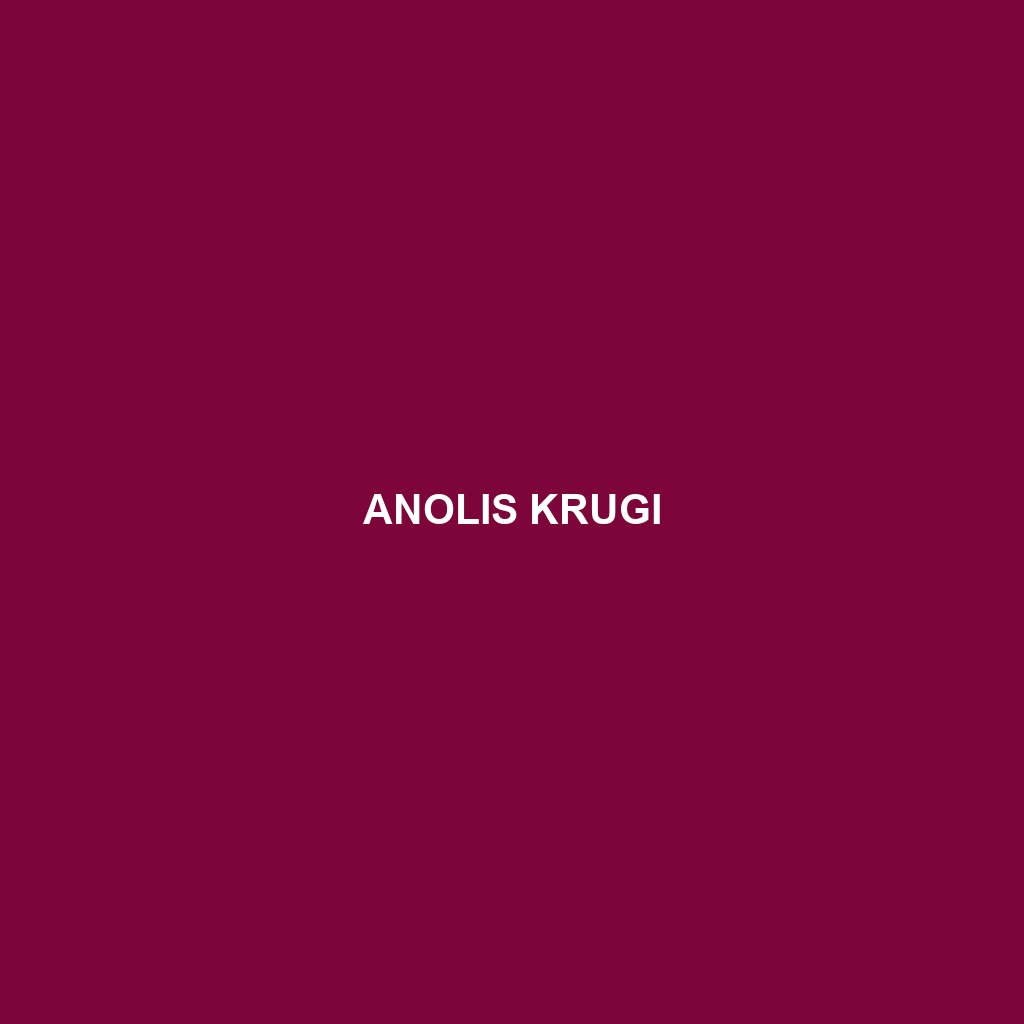Anolis krugi
Common Name: Anolis krugi
Scientific Name: Anolis krugi
Habitat
Anolis krugi is primarily found in the tropical forests of the Caribbean, particularly on the island of Jamaica. This lizard favors humid environments with plenty of vegetation, thriving in both primary and secondary forests. Its ability to adapt to varying elevations, from coastal areas to mountainous regions, allows it to occupy a range of habitats, including disturbed areas and gardens in human settlements.
Physical Characteristics
Anolis krugi typically reaches a size of about 10 to 15 cm in total length. Its coloration ranges from a vibrant green to earthy brown, providing effective camouflage among leaves and branches. Notable features include a distinct dewlap, which is often brightly colored and serves as a means of communication during mating displays and territorial disputes. The slender body and elongated limbs facilitate swift movement and climbing abilities among its arboreal habitat.
Behavior
This species is diurnal, meaning it is primarily active during the day. Anolis krugi exhibits a range of behaviors, including territorial displays where males stake out their claim by extending their dewlaps and bobbing their heads. It is also known for its adept climbing skills, often seen basking in the sun on tree branches. The lizards display a curious nature, often exploring their surroundings and engaging in social interactions with other lizards.
Diet
Anolis krugi is an insectivorous lizard, primarily feeding on a variety of insects such as crickets, termites, and ants. It may also consume other small invertebrates, showcasing a diverse diet that helps it thrive in its natural habitat. The lizard captures its prey using a quick and agile hunting strategy, often foraging on leaves and branches.
Reproduction
The reproductive habits of Anolis krugi include seasonal mating, with breeding typically occurring during the warm, wetter months of the year. Females lay one to two eggs at a time in hidden locations, such as leaf litter or small crevices. The incubation period lasts several weeks, and hatchlings are independent from the moment they emerge, capable of adapting to their environment swiftly.
Conservation Status
Anolis krugi is currently listed as a species of least concern by the International Union for Conservation of Nature (IUCN). However, habitat loss due to deforestation and human encroachment poses potential threats to its populations. Continuous monitoring is necessary to ensure its conservation status remains stable.
Interesting Facts
One fascinating aspect of Anolis krugi is its remarkable ability to change color slightly for better camouflage, a trait that aids in evading predators. Additionally, this lizard is part of a larger genus known for their diverse adaptations, with over 400 species worldwide.
Role in Ecosystem
Anolis krugi plays a critical role in its ecosystem as both a predator and prey. By controlling insect populations, it contributes to the ecological balance. Furthermore, it serves as a food source for various birds and other predators, highlighting its importance in the food web. This lizard’s presence indicates a healthy forest ecosystem, as it relies on a rich biodiversity for survival.
